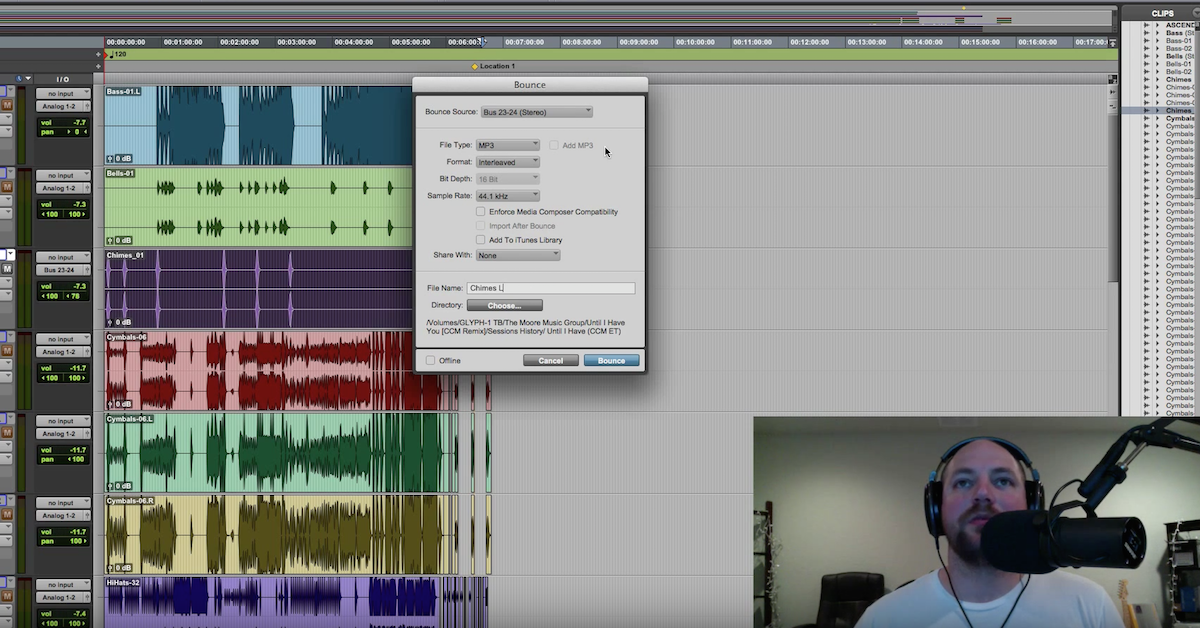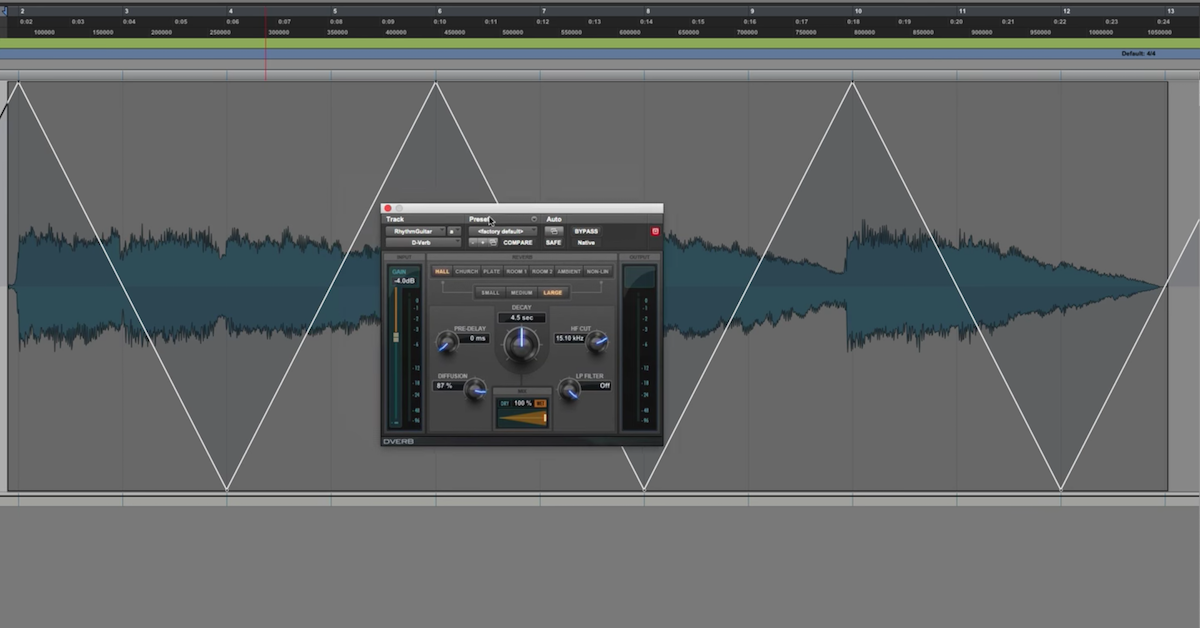The Importance of Mono in a Stereo Mix
Article Content
➥ The new e-book from Cristofer Odqvist is available now
Today the great majority of commercially available music is mixed in stereo.
There are some exceptions — like The Red Hot Chili Peppers’ Californication which was mostly mixed in mono — but being an audio engineer today requires the skill of knowing when to make use of either mono or stereo information in a mix.
One of the key concepts here is contrast.
Having certain elements in mono can make other elements seem wider, and making good use of the stereo field can add more punch and presence to the tracks in the middle. The latter is important since the elements panned center are usually really important parts like the bass, kick, snare and lead vocals.
There are other key aspects here as well, such as being aware of potential phase problems and making sure you don’t use up more space than you have to in your mix.
Let’s begin.
Phase
When soundwaves are (partially or totally) out of phase with each other, some frequencies can disappear. A word of caution here is that stereo sounds that have a lot of phase problems between the left and the right channel can sound really wide when played back in stereo, but lose some frequency content when combined to mono.
A good practice is to occasionally listen to your mix in mono, using either a mono button on your mixer/audio interface or a plugin with a mono button on your master bus in your DAW.
You should mostly be listening for sounds that seem to disappear or sounds that lose a lot of treble. Mixes that sound good in mono will usually sound great in stereo; listen to some of your favorite mixes (and mixes you don’t like too much) in mono and get used to how they sound. Then compare with your own mixes.
Don’t Let Your Bass Eat Up Your Space
Back in the days when most music ended up on vinyl, the low bass had to be in mono since stereo information down in the lower frequencies would make the needle jump out of the groove.
In the digital age (disregarding the recent vinyl revival for now) there are still reasons to keep your bass in mono:
- Bass frequencies have a lot of energy (they move lots of air) and will take up more space in a mix than mid or high frequencies. Keeping the bass mono will limit the amount of space used.
- Most subwoofers are mono anyway so you’ll have more control over the sound being played back on different systems if you keep the bass in mono.
- Stereo information might very well mean phase problems when the left and right channels combine (in a mono speaker or in the phantom center between two speakers). Bass frequencies are sensitive to phase problems and can easily lose punch and definition.
What if you like the sound of bass in stereo? Don’t worry, the human brain can’t localize sound at frequencies lower than about 80 Hz.
This means that there’s no real benefit of having frequencies down there panned out in stereo anyway, so you can concentrate on higher frequencies giving your bass that stereo spread. A couple of ways to do this:
- If the bass you’re using contains stereo information, duplicate the track and put an EQ/filter on each track. On the first track, put a low pass filter at 80 Hz. Use your best quality EQ for this to avoid excessive phase distortion. Now make this track mono; you can sum the left and right channel to mono and you can separate the channels into two mono tracks. This will give you three tracks to compare; choose the one that sounds the best to you in terms of punch, clarity etc. On the duplicated track, use a high pass filter starting at 80 Hz. Go higher with the filter and find the sweet spot where you get rid of some mud but still feel that the bass sound is perceived as one sound.
- When the sound source is in mono you have to create the stereo width. Do exactly as in the previous example but instead of “monoizing” the low part, you make the higher frequencies stereo by adding chorus or delaying the left or right channel and adding a subtle pitch shift to either side. Make sure it sounds alright in mono too!
- Send a mono bass sound to a short reverb, filter out everything below 200 Hz on the reverb send.
Delay
If you want a track to seem bigger, you can use a stereo delay (usually short delay times).
When the desire is to add depth or move something back in the mix, a mono delay with longer delay times will do it.
Reverb
Most digital reverbs are in stereo by default, so unless you’re using a plate reverb, spring reverb or a real chamber you probably don’t have to worry about having to make your reverb returns stereo.
There are, nonetheless, some great applications for mono reverbs in a mix.
The first question you should ask yourself is “am I trying to simulate an instrument being played in a real space?”
If the answer is yes, the logical choice is to use a stereo reverb since that’s how (most) humans hear real spaces.
For mono sources such as vocals, guitars and sometimes drums, using a mono reverb such as a plate or a spring reverb can be a great way to get a lot of depth and at the same time limiting the amount of space your reverb takes up in the mix.
Here are two ways to add width to a sound using either mono or stereo reverb:
- Use a mono reverb and pan the dry signal and the reverb return to opposite sides.
- If the sound you’re going to process needs to be panned center or close to it, use a stereo reverb with a reverb time shorter than one second.
Another cool application is using a mono reverb on a wide stereo source. This will give the impression of the sound going from the sides to deep down the middle, kind of like the sound going through a funnel.
Keep reading with Importance of Mono in a Stereo Mix — Part 2
Take Your Music to the Next Level
Making Sound is available now, a new e-book filled with 15 chapters of practical techniques for sound design, production, mixing and more. Quickly gain new perspectives that will increase your inspiration and spark your creativity. Use the 75 additional tips to add new sparkle, polish and professionalism to your music.





